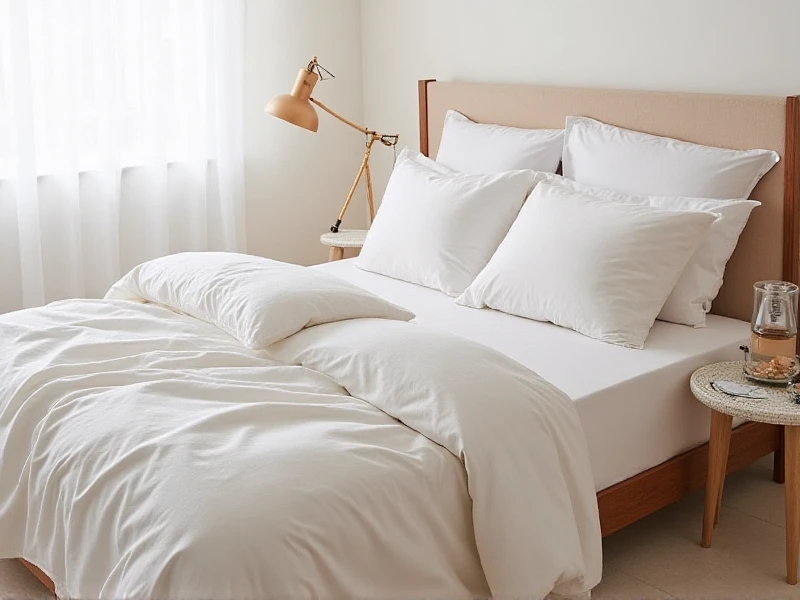The Ultimate Guide to Choosing Perfect Bedding for Blissful Sleep
2025-06-06

SEO-Optimized English Article - Target Keyword: Bedding
Getting quality sleep starts with what touches your skin all night: your bedding. Choosing the right bedding isn't just about aesthetics; it significantly impacts your comfort, sleep quality, and even overall well-being. Understanding key factors like material, thread count, weave, and care ensures you invest wisely for countless nights of restful slumber.
Why Your Bedding Choice Matters
Bedding acts as your nightly sanctuary. High-quality sheets, duvet covers, and pillowcases regulate temperature, wick away moisture, and feel soft against your skin. Conversely, poor-quality bedding can cause overheating, irritation, restless nights, and frequent washing frustration. Truly, the right bedding transforms your bed into a genuine haven for rejuvenation.
Key Factors When Selecting Bedding
1. Material: This is paramount.
Cotton: The undisputed king of bedding fabrics for good reason. Breathable, durable, and soft, especially high-quality Cotton bedding like Egyptian or Pima (Supima). Ideal for hot sleepers and year-round comfort. Long-staple cotton bedding offers superior softness and longevity.
Linen: Naturally temperature-regulating, incredibly breathable, and absorbent. Linen bedding gets softer with each wash and has a beautiful, relaxed texture. Perfect for warm climates and those seeking a rustic-chic look. Develops a characteristic (desirable) crinkle.
Bamboo: Incredibly soft, silky feel, naturally hypoallergenic, antibacterial, and moisture-wicking. An excellent eco-friendly option often cooler than cotton. Often blended with cotton.
Microfiber/ Polyester: Affordable and wrinkle-resistant, but less breathable than natural fibers. Can trap heat and cause sweating. Often chosen for budget constraints or specific decor needs.
Silk: Luxurious, temperature-regulating, gentle on skin and hair, hypoallergenic. Requires delicate care and is a higher investment. Prized for its smooth feel.
Flannel: Brushed for extra softness and warmth. Ideal winter bedding but can be too hot in summer. Typically made from cotton or wool blends.
2. Thread Count (TC): Often misunderstood. While a higher TC (e.g., 300-600) generally indicates a denser, smoother fabric, quality is more about the fiber length (long-staple) and weave. A 400 TC sheet made of long-staple cotton will feel better and last longer than a 1000 TC sheet from shorter fibers. Don't be solely swayed by high numbers. Prioritize fiber quality over excessive thread count claims.
3. Weave: Impacts look, feel, and durability.
Percale: Crisp, cool, matte finish. Lightweight and breathable, like a classic button-down shirt. A popular bedding choice for warmer sleepers.
Sateen: Smooth, silky, lustrous surface with a subtle sheen. Slightly heavier and warmer than percale, drapes beautifully. Feels luxurious.
Jersey Knit: Soft, stretchy, t-shirt-like feel. Very comfortable and casual. Prone to pilling over time. Great for a cozy feel.
Flannel: Brushed on both sides for fuzzy warmth. Standard for cold-weather bedding sets.
4. Fit: Ensure your fitted sheet matches your mattress depth (standard, deep, pillow-top, extra deep). A sheet popping off the corner is a major sleep disruptor! Measure your mattress thickness precisely.
5. Design & Personal Style: Beyond comfort, your bedding is a central part of your bedroom decor. Choose colors, patterns (stripes, florals, solids, embroidery), and textures that reflect your taste and create the desired ambiance (calming, vibrant, minimalist, cozy). Coordinating bedding sets simplify decor.
Caring for Your Investment
Proper care extends the life and beauty of your bedding.
Wash: Always check the care label. Wash new bedding before first use to soften fibers and remove manufacturing residues. Wash most cotton and linen in warm or cool water. Use mild detergent, avoid bleach. Wash similar colors together.
Dry: Tumble dry on low heat or, preferably, line dry (especially linen) to prevent shrinkage and excessive wrinkling. Remove promptly from the dryer to minimize wrinkles. Slight wrinkles in linen are part of its charm.
Rotate: Have at least 2-3 sets to rotate. This allows fibers to rest and reduces wear and tear.
Seasonal Swap: Consider lighter sheets (cotton percale, linen, bamboo) for summer and warmer options (cotton flannel, higher GSM sateen, brushed cotton) for winter for optimal comfort.
Finding Your Perfect Bedding
Trial and comfort preference are key. Don't hesitate to feel fabrics in stores if possible. Prioritize natural fibers like top-quality cotton bedding or linen bedding for the best combination of breathability, comfort, and durability. For silky softness, bamboo is excellent, while wool or down are classics for cozy duvets and comforters that complete the sleep sanctuary. Investing in luxurious bedding truly elevates your bedroom experience and pays dividends in restful nights for years to come.
By carefully considering the material, weave, and quality factors that matter most to your sleep needs and personal style, you can create a haven of comfort and style. Explore high-quality bedding options today and feel the difference restful sleep makes. Share this guide to help others find their perfect nightly comfort!
Category: